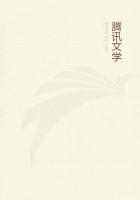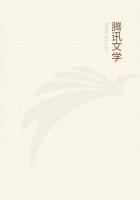It is probable that the creature chosen was the traditional ancestress, as we are told that the First Man had many wives among the animal people. The sacred beast, bird, or reptile, represented by its stuffed skin, or by a rude painting, was treated with reverence and carried into battle to insure the guardianship of the spirits. The symbolic attribute of beaver, bear, or tortoise, such as wisdom, cunning, courage, and the like, was supposed to be mysteriously conferred upon the wearer of the badge. The totem or charm used in medicine was ordinarily that of the medicine lodge to which the practitioner belonged, though there were some great men who boasted a special revelation.
There are two ceremonial usages which, so far as I have been able to ascertain, were universal among American Indians, and apparently fundamental. These have already been referred to as the "eneepee," or vapor-bath, and the "chan-du-hu-pah-yu-za-pee," or ceremonial of the pipe. In our Siouan legends and traditions these two are preeminent, as handed down from the most ancient time and persisting to the last.
In our Creation myth or story of the First Man, the vapor-bath was the magic used by The-one-who-was-First-Created, to give life to the dead bones of his younger brother, who had been slain by the monsters of the deep. Upon the shore of the Great Water he dug two round holes, over one of which he built a low enclosure of fragrant cedar boughs, and here he gathered together the bones of his brother. In the other pit he made a fire and heated four round stones, which he rolled one by one into the lodge of boughs.
Having closed every aperture save one, he sang a mystic chant while he thrust in his arm and sprinkled water upon the stones with a bunch of sage. Immediately steam arose, and as the legend says, "there was an appearance of life." A second time he sprinkled water, and the dry bones rattled together. The third time he seemed to hear soft singing from within the lodge; and the fourth time a voice exclaimed: "Brother, let me out!" (It should be noted that the number four is the magic or sacred number of the Indian.)
This story gives the traditional origin of the "eneepee," which has ever since been deemed essential to the Indian's effort to purify and recreate his spirit. It is used both by the doctor and by his patient. Every man must enter the cleansing bath and take the cold plunge which follows, when preparing for any spiritual crisis, for possible death, or imminent danger.
Not only the "eneepee" itself, but everything used in connection with the mysterious event, the aromatic cedar and sage, the water, and especially the water-worn boulders, are regarded as sacred, or at the least adapted to a spiritual use. For the rock we have a special reverent name--"Tunkan," a contraction of the Sioux word for Grandfather.
The natural boulder enters into many of our solemn ceremonials, such as the "Rain Dance," and the "Feast of Virgins." The lone hunter and warrior reverently holds up his filled pipe to "Tunkan," in solitary commemoration of a miracle which to him is as authentic and holy as the raising of Lazarus to the devout Christian.
There is a legend that the First Man fell sick, and was taught by his Elder Brother the ceremonial use of the pipe, in a prayer to the spirits for ease and relief. This simple ceremony is the commonest daily expression of thanks or "grace," as well as an oath of loyalty and good faith when the warrior goes forth upon some perilous enterprise, and it enters even into his "hambeday," or solitary prayer, ascending as a rising vapor or incense to the Father of Spirits.
In all the war ceremonies and in medicine a special pipe is used, but at home or on the hunt the warrior employs his own. The pulverized weed is mixed with aromatic bark of the red willow, and pressed lightly into the bowl of the long stone pipe. The worshiper lights it gravely and takes a whiff or two; then, standing erect, he holds it silently toward the Sun, our father, and toward the earth, our mother. There are modern variations, as holding the pipe to the Four Winds, the Fire, Water, Rock, and other elements or objects of reverence.
There are many religious festivals which are local and special in character, embodying a prayer for success in hunting or warfare, or for rain and bountiful harvests, but these two are the sacraments of our religion. For baptism we substitute the "eneepee," the purification by vapor, and in our holy communion we partake of the soothing incense of tobacco in the stead of bread and wine.















